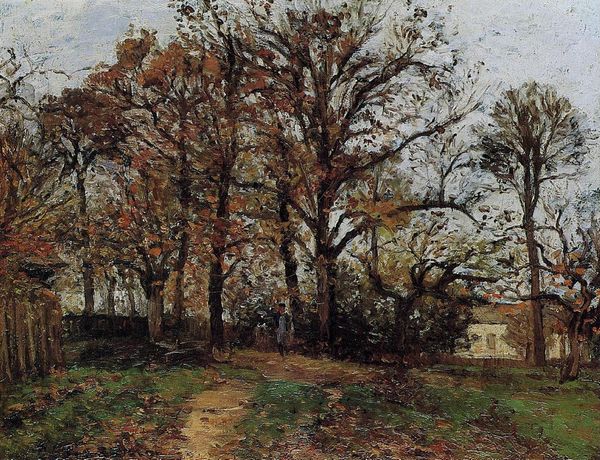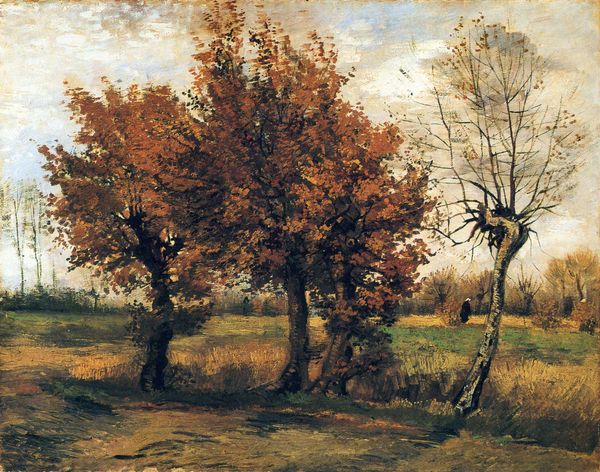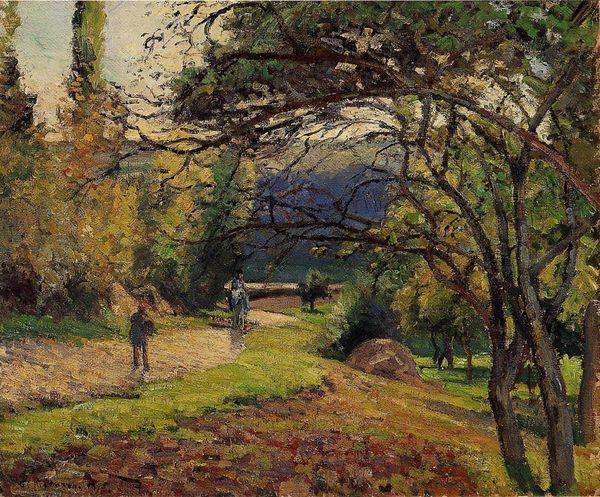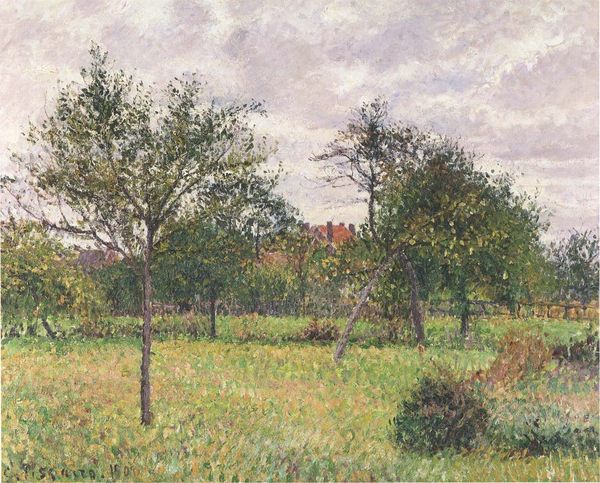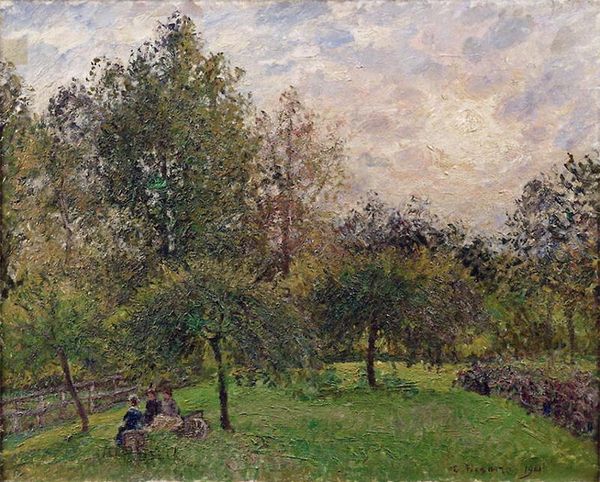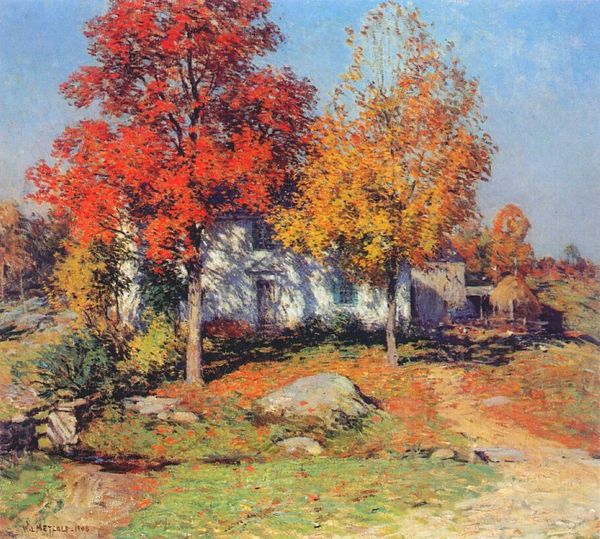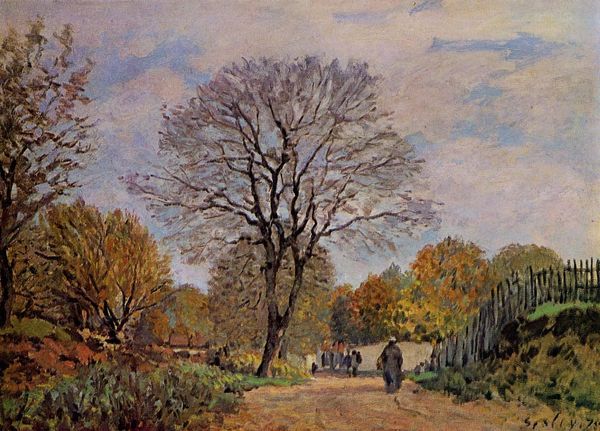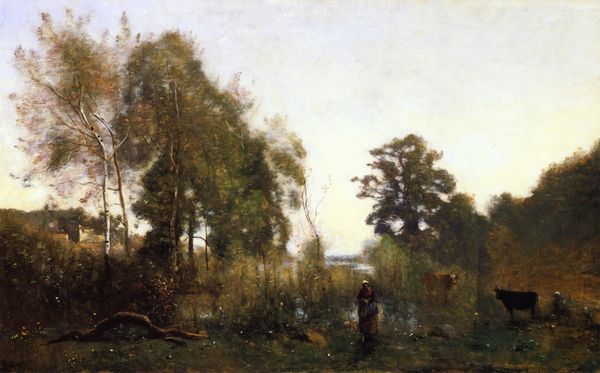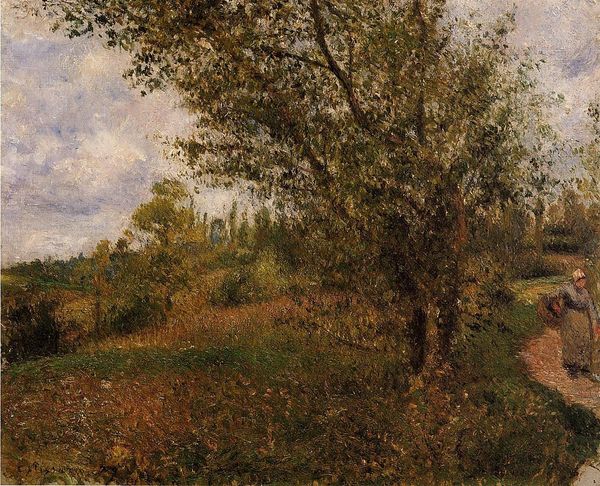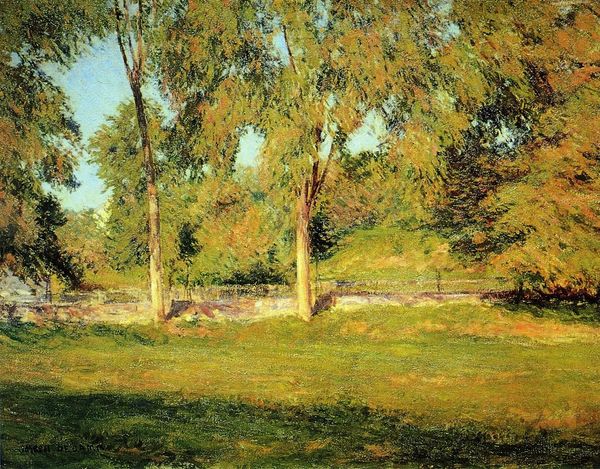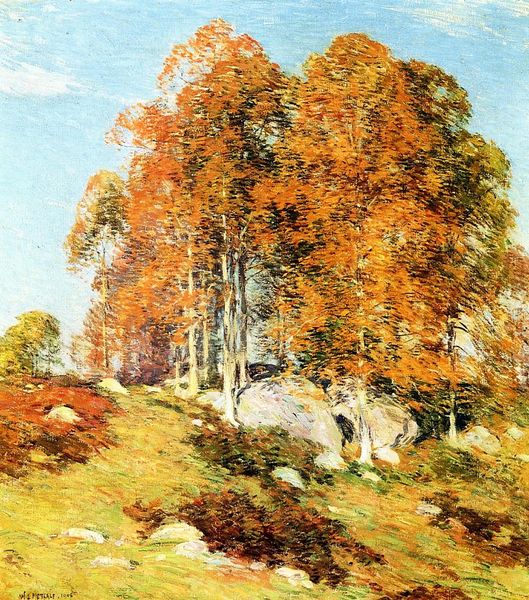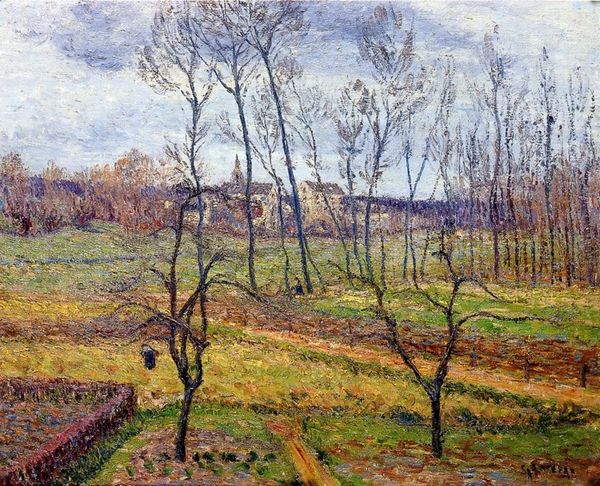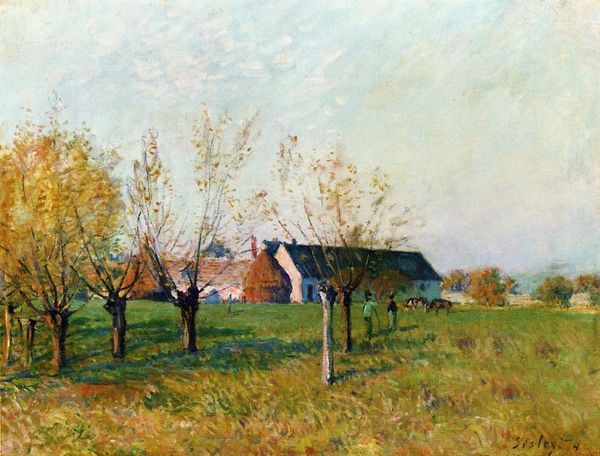
painting, plein-air, oil-paint
#
painting
#
impressionism
#
plein-air
#
oil-paint
#
landscape
#
figuration
#
realism
Dimensions: 50.48 x 55.5 cm
Copyright: Public domain
Curator: Here we have Camille Pissarro's "Autumn Landscape, near Pontoise," painted in 1872. Pissarro, a key figure in Impressionism, was deeply interested in rural life and the French landscape, particularly in the area around Pontoise, just northwest of Paris. Editor: It feels so… melancholy, almost faded. Like looking at a beautiful memory just starting to blur around the edges. The muted palette really leans into that feeling of autumnal decline. Curator: That sense of transience is characteristic of Impressionism. Pissarro was interested in capturing fleeting moments of light and atmosphere. He worked "en plein air," painting directly from nature, and, reflecting Realist aesthetics, his paintings document everyday rural scenes. Editor: And he isn't afraid to show us the messiness of it all. The way the ground is churned up, the somewhat haphazard arrangement of trees. It isn't some idealized vista. He embraces imperfection which paradoxically seems very real. You almost feel the damp air! Curator: Precisely. It moves away from the academic traditions. Pissarro presents the landscape as experienced. But, notably, Pissarro also had a politically engaged approach, often focusing on the lives of rural workers, evident in the figure in the background. These scenes captured a specific time of rural transformation amidst urbanization. Editor: Ah, so the lone figure almost grounds the whole thing? Pulls the epic scenery down into the grit of ordinary labor? A single human life nestled into this changing scene, love that! Though, I wonder what stories she could tell. Curator: It's precisely that interaction between the human and the land, the social and the aesthetic, that makes Pissarro so compelling to study. He documented the everyday. And his scenes offer insightful perspectives on shifting socio-political paradigms. Editor: I suppose his 'ordinariness' speaks to us across the ages because it mirrors back to us how the mundane is, in fact, incredibly potent and affecting, worth documenting. That figure will linger. Curator: I agree entirely. This painting reminds us of the beauty found in everyday existence and invites us to reflect on the relationship between humanity and its environment. Editor: Right. Sometimes, the most powerful art lies in embracing the muted beauty of what's fleeting, the echoes of what's ordinary. Thanks, Camille.
Comments
No comments
Be the first to comment and join the conversation on the ultimate creative platform.
